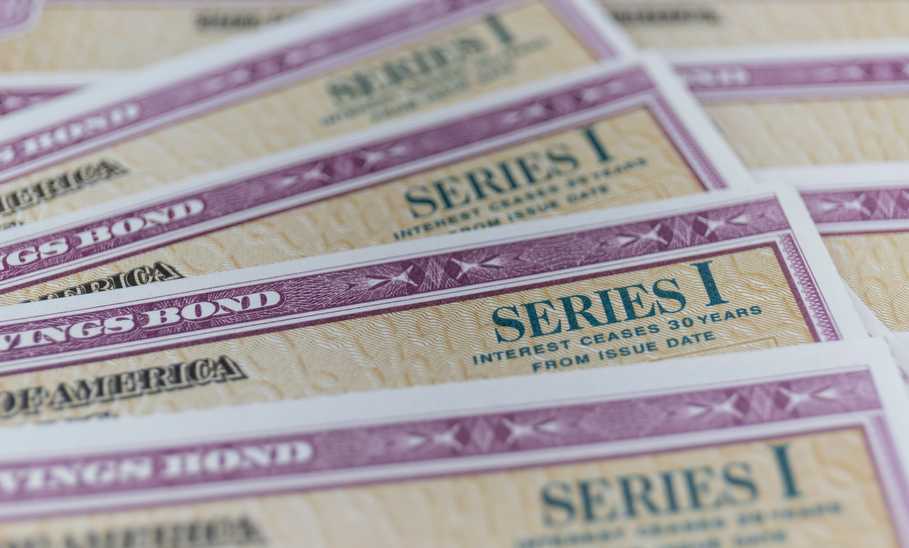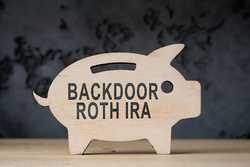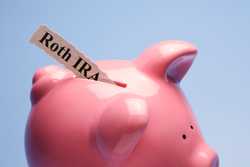Best Savings Bonds to Buy in December 2024

Our evaluations and opinions are not influenced by our advertising relationships, but we may earn a commission from our partners’ links. This content is created by TIME Stamped, under TIME’s direction and produced in accordance with TIME’s editorial guidelines and overseen by TIME’s editorial staff. Learn more about it.
A savings bond is essentially a loan to the U.S. government. When the bond matures or is redeemed, Uncle Sam pays you back the money you lent plus interest, meaning that your money is working for you without much effort on your part.
There are pros and cons to buying savings bonds. For conservative investors, they offer a low-risk way to bring in some extra cash.
The Treasury issues two types of savings bonds: the EE and I series.
Series I savings bonds are a good place to park your cash if you’re looking for diversification and protection from climbing consumer prices. The interest rate is adjusted every six months based on inflation. That means that you have no guarantee what the rate on the bond will be years from now, but at least you’ll know that it will keep up with rising costs. If inflation is high, the interest rate will help your money retain its purchasing power.
The interest is exempt from state and local taxes, and if you use the bonds to cover education expenses, it may also be exempt from federal taxes. You can give these bonds as a gift.
Series EE savings bonds are a good way to store your money if you’re looking for a low-risk, fixed return in volatile markets. Unlike Series I bonds, the interest rate on Series EE bonds stays the same for at least the first 20 years. And if you hold on to the bond for two decades, the U.S. government guarantees that it will double in value.
Similar to Series I savings bonds, the interest on these bonds is exempt from state and local taxes, and potentially also federal taxes if you use the bonds to cover higher education expenses. Like Series I bonds, you can give Series EE bonds as a gift.
| Type of savings bond | Issuer | Current interest rate | Term length | Minimum purchase | Maximum purchase |
|---|---|---|---|---|---|
Series I | U.S. Department of the Treasury | 4.28% for bonds issued between May 1, 2024 and Oct. 31, 2024 | Up to 30 years | $25 for electronic bonds; $50 for paper bonds | $10,000 in electronic bonds per year; $5,000 in paper bonds per year |
Series EE | U.S. Department of the Treasury | 2.70% for bonds issued between May 1, 2024 and Oct. 31, 2024 | Up to 30 years | $25 | $10,000 per year |
To come up with our recommendations, we assessed and included both types of savings bonds issued by the U.S. government. We analyzed the risk and how interest is calculated to determine which was best for inflation protection and which was best for market volatility.
The best savings bond for one saver may not necessarily be the best option for everybody.
Series EE bonds and I bonds have a lot in common, including their tax treatment, how often they earn interest, and when you can cash out. The biggest difference is how their interest is calculated, and that’s likely the main factor you’ll have to consider when choosing between the two.
The interest rate on Series I bonds is variable and changes with inflation, while the interest on Series EE bonds is fixed for at least the first 20 years that you hold it. While you can be sure you won’t lose money with either, only the Series EE bond comes with a guarantee that after 20 years your money will be doubled.
Selecting the best savings bond will come down to the goals you have for your money and how you expect consumer prices to behave until you meet those goals. If you’re looking for inflation protection and are comfortable with your interest rate dropping in times of low inflation, the Series I bond may be the way to go. Alternatively, if you’re not as worried about inflation and instead want a guaranteed interest rate and return, it may make more sense to buy Series EE bonds.
While savings bonds are a low-risk way to earn interest on your cash, there may be better options out there for your short-term cash—especially in today’s high interest rate environment. Here are some low-risk alternatives to savings bonds to consider.
Traditional CDs are savings vehicles offered by banks and credit unions that require you to lock up your cash for a specified amount of time. Some of the best CDs are currently paying interest rates of 5% and higher. When you buy a CD, you’re guaranteed to get its advertised interest rate for its duration, which is typically between three months and five years, provided you don’t make any early withdrawals.
High-yield savings accounts are similar to regular savings accounts you may have at a bank or credit union, but they pay more interest. They're typically offered by online and smaller banks and credit unions that don’t have to cover the costs of maintaining large brick-and-mortar institutions. The best high-yield savings account interest rates are currently around 5%, but these rates are variable and can fluctuate at any time. However, you can access your money without penalty whenever you want.
Like savings bonds, Treasury bills, bonds, and notes are issued by the Treasury Department and backed by the U.S. government. Treasury bills mature in a year or less and interest is paid at maturity. Treasury bonds mature in 20 to 30 years and interest is paid every six months. Treasury notes mature in two to 10 years and interest is paid every six months. While you buy treasuries from the U.S. government directly, you can also use platforms like Public App for treasuries.
Like I bonds, Treasury-issued TIPS can help protect your money from inflation. While the principal on other Treasury securities is fixed, the principal on TIPS moves up and down with inflation. TIPS mature in five to 30 years and pay interest every six months.
A well-balanced portfolio consists of stocks, bonds, and cash. If you’re already investing in higher-risk assets like stocks, incorporating savings bonds into your plan could help give you a bit of diversification. They’re a way to put your cash to work without the risk of losing money.
Savings bonds offer a low-risk way to save for your future while earning interest. These bonds are issued by the U.S. Treasury Department to help fund the government’s spending needs. The fact that they’re backed by the government makes them extremely safe—you don’t have to worry about not getting your money back once the bond matures.
The benefit of investing in savings bonds is the extra money the government pays you back. As an incentive for buying savings bonds, you earn interest on your bond. The amount of interest that you earn depends on the type of savings account you buy, the rate of inflation, and the principal amount.
Savings bonds can be used to save for goals like retirement or college tuition. These bonds can also make good gifts.
The U.S. Treasury issues two types of savings bonds. The main difference is how the bonds earn interest.
The U.S. Treasury began issuing Series I bonds in 1998 as a way for long-term savers to protect their money against inflation. The bond’s interest rate is determined by a fixed rate and an inflation rate that the government calculates every May and November. That means that the rate can fluctuate.
The interest rate on an I bond issued between November 1, 2023 and April 30, 2024 was 5.27%. On May 1, 2024, it was adjusted to 4.28% through October 31, 2024. Once that date is surpassed, the rate will change again.
The bond earns interest every month, and every six months the Treasury applies the bond’s interest rate to the new principal value, which is the previous principal plus the interest earned in the past six months. That compounding helps your money grow.
When do you get your money back? You can either wait until the bond reaches the end of the 30-year term or cash it out sooner. Keep in mind that you must wait at least 12 months to cash out the bond and that if you cash it out within five years you’ll lose the last three months of interest.
The interest rate treatment is different for Series EE savings bonds. Instead of the rate being pegged to inflation, it is set when you buy the bond and stays the same for 20 years. After those two decades, the Treasury may adjust the rate for the remainder of the bond’s term.
A Series EE bond issued between May 1, 2024 and October 31, 2024 will earn an interest rate of 2.70% for at least 20 years. But a bond issued after that could come with a different interest rate. Interest rates for new bonds are updated every May and November. Note that the rules are different for bonds that were issued before May 2005, since that’s when the government started paying a fixed interest rate for this type of bond.
Another thing that makes Series EE bonds stand out is a guarantee from the government that after 20 years the value of your bond will be double what you paid for it. If the bond doesn’t reach this target by 20 years, the government will make a one-time adjustment to the interest earnings.
Like the Series I bonds, the EE bonds earn interest monthly and interest is compounded twice a year. The rules for cashing out the bond are the same too: You can do so after 12 months, but you will lose out on three months of interest unless you hold the investment for at least five years.
You can buy savings bonds directly from the Treasury Department by visiting www.treasurydirect.gov. You’ll have to create a TreasuryDirect account, choose the “BuyDirect” option, and indicate which type of savings bond you want to buy.
You’ll also need to specify who will own the bond so that the Treasury knows whom to pay interest to and who can cash it out. If you’re gifting the bond, you and the gift recipient need to have a TreasuryDirect account, and you’ll need to know their name, Social Security or tax identification number, and their TreasuryDirect account number.
These days, savings bonds are sold electronically and there is a $25 minimum. The only way to buy savings bonds in paper form is with your IRS tax refund and that option is only available with Series I Bonds. If you go down that path, you can buy up to $5,000 per person in increments of $50. You’ll specify on IRS Form 8888 how much of your refund you want to use to buy bonds (the rest will go to your bank account as usual) and who will own the bonds.
You can only buy up to $10,000 worth of Series EE bonds per calendar year. With Series I bonds, you can buy $10,000 in electronic bonds and $5,000 in paper bonds per calendar year.
When you buy Series EE and Series I savings bonds, you won’t owe state or local taxes on the interest. You’ll likely owe federal taxes on the interest, but you can opt to defer paying those taxes until the bond matures or you cash it in, which is what most people choose to do.
You may be able to avoid paying those federal taxes if you’re using the savings bond to pay for higher education tuition and fees, it was issued after 1989, and you don’t exceed the income limits. The bond has to be registered to you (or you and your spouse if you’re married), and you have to be at least age 24 when it’s issued. That means if you want to use the bond to pay for a child’s college expenses, the bond still has to be registered to you.
If you are planning to buy a savings bond with this federal tax exemption in mind, be sure to check that you meet all the conditions before applying.
Interest earned on savings bonds is reported on your federal income tax return on the same line that you report other interest income. If the bond is registered to someone else, like a child, report the interest on their tax return.
Other than federal tax, the interest on savings bonds is also subject to gift, estate, and excise taxes.
Savings bonds are considered low-risk investments, as it is deemed unlikely that the U.S. government will default and be unable to pay its debts. But that also means a lower return than you could potentially get with higher-risk investments, which can hurt you if you’re saving for the long term.
The S&P 500 index, a benchmark commonly used to measure the overall performance of the U.S. stock market, has historically seen an annualized average return of around 10%. If you invest in the index now and hold on to those investments for 30 years, you’ll likely see a much higher return than if you used that money to buy a savings bond. While Series I and Series EE savings bonds can contribute to a portfolio’s overall diversification, financial advisors typically recommend investing in higher-risk investments like stocks unless you need to access the money soon or are extremely risk-averse.
When you buy savings bonds, you’re also committing your money for a certain amount of time. If there’s a chance you’ll need your money within a year, it’s best to avoid savings bonds, since you won’t be able to cash out until those 12 months are up. They should also probably be avoided if you think you may need to access your money in less than five years. If you make a withdrawal before then, you’ll lose the last three months of interest.
Series I bonds also come with the risk that the interest rate will drop. Series EE bonds, on the other hand, don’t have inflation protection, which means that high inflation can eat away at your money’s purchasing power.
Savings bonds are one of the safest types of savings vehicles out there given that they’re backed by the full faith of the U.S. government. The main difference between the two types of savings bonds—Series I and Series EE—comes down to how interest is earned. Series EE bonds offer a fixed rate and a guarantee to double in value in 20 years, whereas Series I bonds move with inflation.
While savings bonds come with low risk, they also have low returns compared to other investments. If you’re saving for the long term, like for retirement, you may want to consider investing your money elsewhere, such as in the stock market.
When you buy a savings bond, you are loaning money to the U.S. government. You buy a bond issued by the Treasury Department, and the Treasury pays you back the amount you lent plus interest when the bond matures or you choose to cash it out. The bond earns interest every month, and every six months the interest is compounded. That means the longer you own your bond, the more interest it’ll earn.
Whether you should buy Series EE or Series I savings bonds will come down to your goals. If you’re trying to protect your money against inflation, you may want to opt for the Series I bond, since the interest rate adjusts with inflation. But if you’re looking for predictable earnings and the guarantee that your money will be doubled after 20 years, the Series EE bonds may make more sense.
The type of savings bond that is best for you will depend on your goals for the money, such as protecting your purchasing power, saving for retirement, or funding higher education expenses; how long you have to reach those goals; and whether you think inflation will be low or high over the period the money is tied up.
Savings bonds are considered a low-risk investment because they’re backed by the U.S. government. When you buy a savings bond, it’s very unlikely that you’ll lose the money you invested.
After you’ve owned your savings bonds for a year, you can cash them out electronically via your TreasuryDirect account, at a bank, or by mailing your filled out FS Form 1522 to the Treasury. There are different requirements if you are cashing out a young child’s paper bonds or are in another country.
The information presented here is created by TIME Stamped and overseen by TIME editorial staff. To learn more, see our About Us page.



